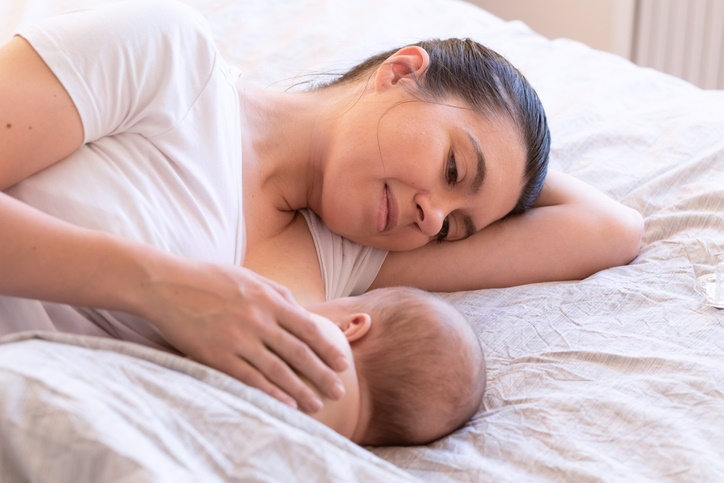
There are many complex yet amazing bodily elements that occur during pregnancy in order to create a new human life.
While welcoming a new child is an exciting and joyous time for mothers, it can also be followed by some unwelcome side effects that many women need assistance in understanding.
Post-partum depression, for example, has been raised as a topic of conversation more and more in recent years which has done wonders for raising awareness - more people, women especially, are now more are aware of it and the symptoms which accompany it which enables them to recognize the signs and proactively seek help and support.
Unlike post-partum depression, post-partum thyroiditis has not received as much attention and many pregnant women are unaware that this should be something to look out for too.
Dr. Justus Apffelstaedt, specialist surgeon with an interest in breast, thyroid and parathyroid health management, unpacks some frequently asked questions on this issue.
What is post-partum thyroiditis?
To start, one must understand the essential functionality of the thyroid, he told Parent24.
The thyroid is a small gland located at the base of the neck that is part of our endocrine system, but small as it is, is a crucial gland. It affects, directly or indirectly, almost every function in our bodies: our temperature, our digestive system and mental development.
Post-partum thyroiditis can occur following pregnancy and may involve hyperthyroidism, hypothyroidism or both consecutively. In most cases, the first phase is typically hyperthyroidism which either returns to normal with time or develops into hypothyroidism.
Read more about family health here
Hyperthyroidism involves an increase of thyroid hormones released into the body. Weight is lost despite a good appetite.
Other symptoms include nervousness and anxiety up to full-blown psychosis, tremors, palpitations, high blood pressure, increased sweating and neck enlargement.
At the opposite end of the spectrum is hyperthyroidism, which results from a lack of thyroid hormones secreted into the body. When this happens, the body seems to “slow down.”
What symptoms should one look out for?
The inflammation and release of thyroid hormone (hyperthyroidism) might first cause the following symptoms:
- Anxiety
- Irritability
- Rapid heartbeat or palpitations
- Weight loss
- Increased sensitivity to heat
- Fatigue
- Tremors
- Insomnia
These symptoms often don’t raise alarm bells as they can easily be misinterpreted to be regular occurrences for mothers who have recently given birth.
Common symptoms of hypothyroidism include:
- Reduced heart rate
- Intense fatigue
- Dry skin
- Hair loss
- Weight gain that cannot be explained by improper diet
- Slow mental activity
- Enlargement of the neck
When might post-partum thyroiditis occur?
It is not until the second phase of post-partum thyroiditis, hypothyroidism, that most women will notice symptoms.
This typically occurs four to eight months after delivery and could last up until nine months to a year.
Women should be encouraged to use this broad timeline as a framework to check in with their bodies as time progresses following giving birth and be on the look out for common symptoms.
How is post-partum thyroiditis diagnosed?
Diagnostic procedures used to detect post-partum thyroiditis depend on the phase of the disease.
A blood test to measure levels of thyroid hormones (T3 and T4) and thyroid-stimulating hormones (TSH) can usually determine whether a mother is experiencing hyperthyroidism and hypothyroidism.
How is post-partum thyroiditis treated?
Fortunately, most women will regain normal thyroid functionality within a year to eighteen months after the onset of symptoms.
However, if a mother develops severe signs and symptoms of hypothyroidism, she will likely need thyroid hormone therapy for between six and twelve months.
This treatment, which involves daily use of the synthetic (man-made) thyroid hormone levothyroxine, which increases the metabolic rate of cells of all tissues in the body.
Compiled for Parent24 by Mango OMC
Chat back:
WhatsApp: Send messages and voicenotes to 066 010 0325
Share your story with us, and we could publish your mail. Anonymous contributions are welcome.
Read more
Mom, is your backache killing you? Here's what might be the cause...
So, you think you can't get a good night’s sleep as a breastfeeding mom? You're wrong
Diastasis Recti: Drew Barrymore shares the secret to fixing her 'mommy-pooch'
Ubuntu Baba founder shares her truth about post-natal depression




 Publications
Publications
 Partners
Partners















